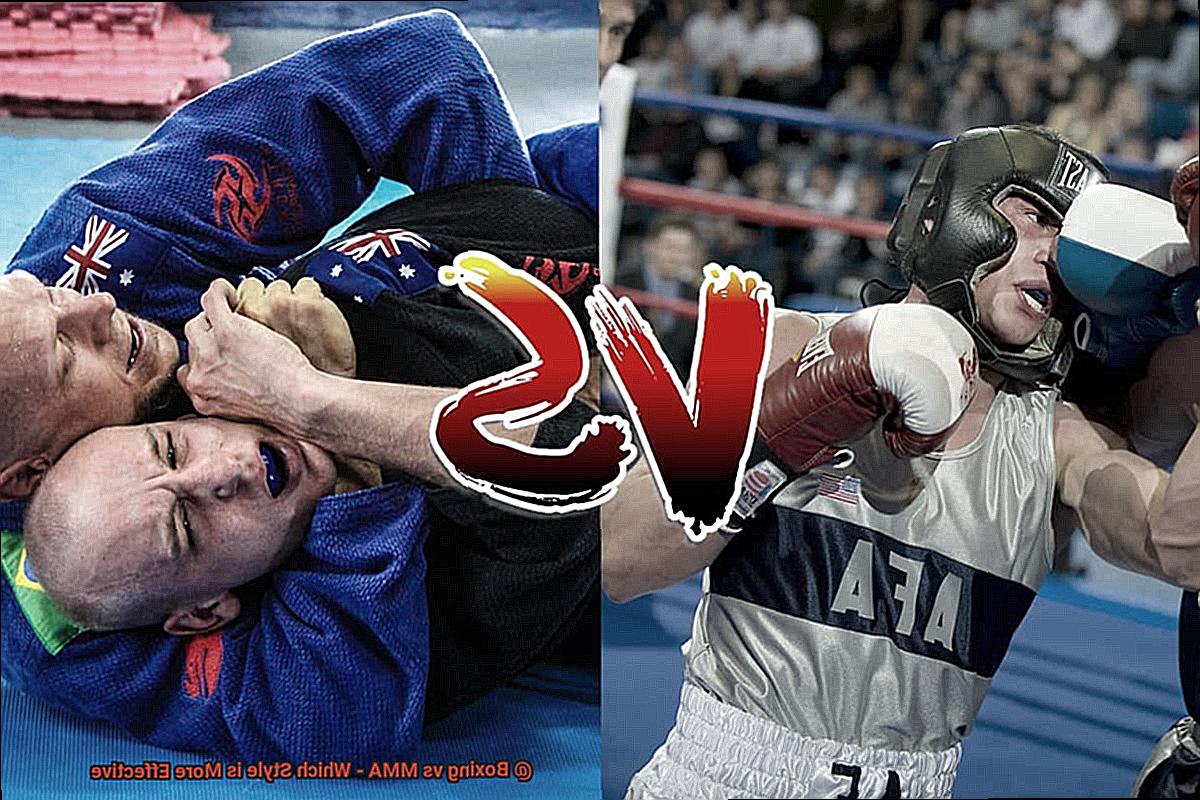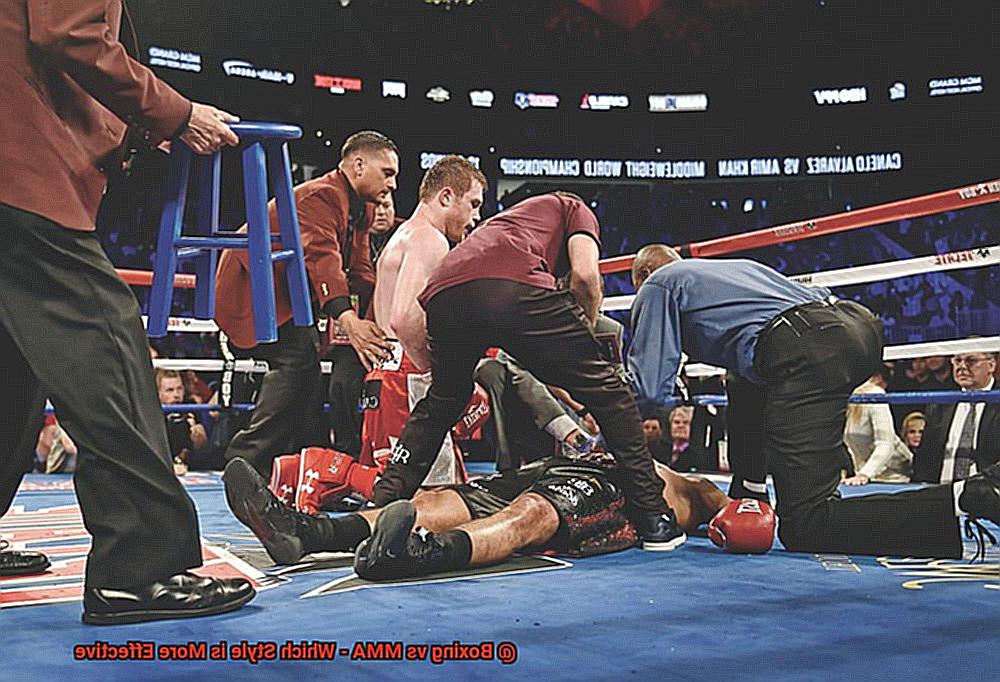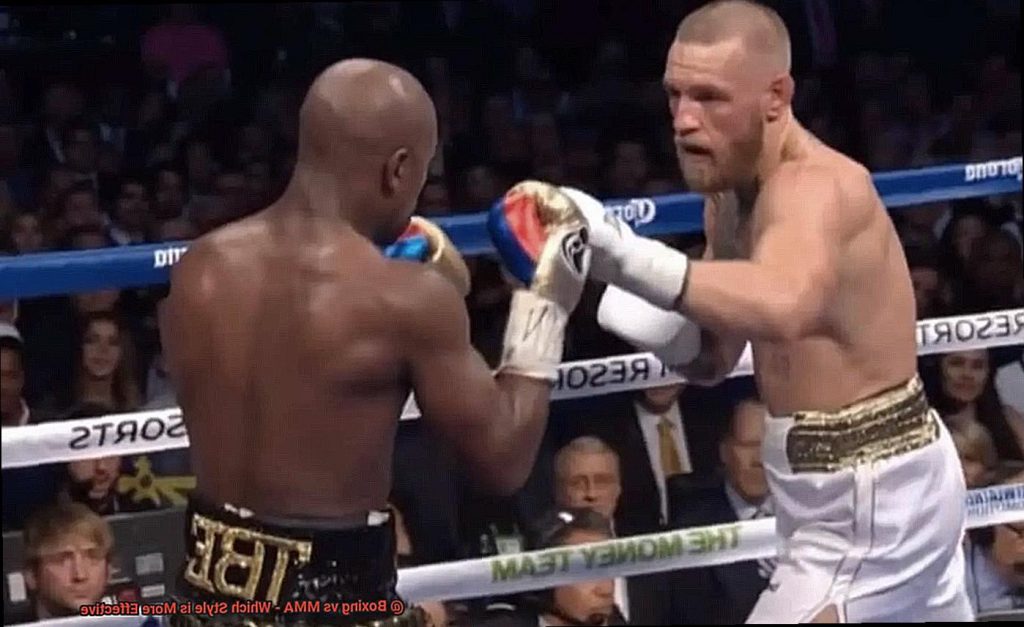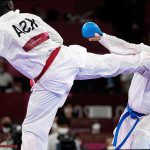Are you a combat sports enthusiast looking to step into the ring? Or are you torn between choosing boxing or mixed martial arts (MMA)? The question of which fighting style reigns supreme has been an ongoing debate among fans and fighters. In this blog post, we’ll tackle the age-old question: “Boxing vs. MMA – Which Style is More Effective?”
Boxing has stood the test of time, with a rich history spanning centuries. With legendary champions like Muhammad Ali, Mike Tyson, and Sugar Ray Leonard, it’s no surprise that boxing is considered a classic combat sport. Meanwhile, MMA is a relatively new player in the game, having gained popularity over the last decade. It combines various martial arts disciplines such as wrestling, Brazilian Jiu-Jitsu, and kickboxing.
But when it comes to real-world combat effectiveness, which style comes out on top? While opinions may differ, we’ll explore some key differences between boxing and MMA to help you make an informed decision.
We’ll delve into striking techniques, grappling maneuvers, and overall skillsets required for each discipline. So grab your gloves and get ready to rumble as we dive into Boxing vs. MMA – Which Style is More Effective?
Differences between Boxing and MMA
Boxing and MMA are two of the most popular styles in the ring, but they differ significantly in their techniques, rulesets, and equipment.
Boxing is all about punching – the art of delivering a clean, knockout punch. Boxers train for years to perfect their technique and develop their power. In contrast, MMA blends various martial arts disciplines, such as grappling, wrestling, and striking, to create a versatile fighting style that allows fighters to adapt to different situations and opponents.
One significant difference between boxing and MMA is the ruleset. In boxing, fighters are only allowed to punch above the waist and cannot use any grappling techniques. In contrast, almost anything goes in MMA except for certain strikes to the groin or back of the head.
This means that an MMA fighter can leverage their grappling skills to take down a boxer and control them on the ground.

Gloves are another major difference between boxing and MMA. Boxers wear padded gloves to protect their hands and reduce the risk of injury. In contrast, MMA gloves are smaller and less padded, allowing for more precise striking and grappling techniques. This also increases the risk of injury for both fighters.
The size of the ring or cage is also different between the two sports. Boxing matches take place in a ring that is typically between 16-20 feet in diameter, while MMA fights occur in an octagonal cage that is usually between 28-32 feet across. The cage provides more space for fighters to move around and use their grappling skills effectively.
Finally, while both sports require significant physical training and conditioning, MMA fighters must also develop skills in multiple disciplines such as wrestling, Brazilian Jiu-Jitsu, Muay Thai, and boxing. Boxers focus solely on perfecting their punching technique and footwork. This means that an MMA fighter needs to be well-rounded, with strong proficiency in various martial arts styles.
Striking Power of Boxing
Boxing is a sport that specializes in striking with the hands, and is renowned for its devastating power. Boxers undergo extensive training to develop their hand speed, accuracy, and power, which allows them to deliver lightning-fast punches that can knock out even the toughest opponents.
The boxing community takes great pride in their technique, believing it to be superior when compared to MMA.
One of the key benefits of boxing is its focus on proper technique development. Boxers are trained to throw punches using correct form, which maximizes their power while minimizing injury risk. Additionally, gloves provide extra padding which allows boxers to throw harder punches without hurting themselves. This combination of technique and equipment results in a deadly striking force that should not be underestimated.
However, MMA fighters have a broader range of striking techniques at their disposal, including kicks, knees, and elbows. These techniques can be just as powerful as boxing punches and can cause significant damage to opponents. Furthermore, MMA fighters are well-versed in grappling, takedowns, and ground fighting techniques which gives them an advantage in close-quarters combat.
Both boxing and MMA have unique strengths when it comes to striking power. Boxing emphasizes powerful punching with proper technique and equipment, whereas MMA offers a wider range of striking techniques along with grappling and ground fighting skills. Ultimately, it comes down to personal preference and individual style.
Advantages of MMA

Look no further than MMA, or Mixed Martial Arts. This dynamic and exciting sport combines techniques from various martial arts disciplines, giving fighters a wider range of skills and techniques compared to boxers.
One of the most significant advantages of MMA over boxing is the ability to fight in multiple ranges. While boxers are limited to striking with their hands, MMA fighters can strike with their hands, feet, knees, and elbows.
They can also use grappling and submissions in close quarters combat. This flexibility makes it easier for MMA fighters to adapt to different opponents and situations.
MMA also promotes a well-rounded approach to training. To become effective fighters, MMA athletes must train in multiple disciplines such as wrestling, Brazilian Jiu-Jitsu, Muay Thai, and boxing. As a result, they tend to have better overall conditioning and physical fitness than boxers.
MMA also offers a wider range of defense techniques compared to boxing. In boxing, the only options are to block or dodge incoming punches. In contrast, MMA fighters can use clinches and takedowns to avoid getting hit altogether. Additionally, they can use submissions to force their opponent to give up without taking any damage.
Rulesets of Each Sport
In boxing, fighters are only allowed to use their fists to strike their opponent above the waistline. That means no kicks, elbows or knees, and absolutely no grappling or wrestling. The aim in boxing is to land clean and effective punches that can knock out your opponent or score you more points.
MMA, on the other hand, combines a variety of martial arts styles that allows for a more diverse range of attacks. In MMA, fighters can use their fists, feet, knees and elbows to strike their opponent in both standing and ground positions. Grappling and wrestling techniques are also permitted, with submissions being a common way to win a fight.
The ruleset in MMA also provides more flexibility when it comes to defense, as fighters can use their whole body to protect themselves from strikes and takedowns. Boxers, on the other hand, must rely solely on their footwork, head movement, and blocking techniques to avoid getting hit.
So which style is more effective? Well, it depends on individual preferences and strengths as well as the specific circumstances of each fight. While boxing may have stricter rules regarding striking techniques, MMA allows for a wider range of attacks and defenses.
In conclusion, understanding the rulesets of each sport is crucial for anyone interested in combat sports. Both boxing and MMA offer unique challenges and opportunities for growth.
Contextual Considerations
Firstly, it’s important to understand the context in which each sport is used. Boxing is a discipline that emphasizes punching with gloves, whereas MMA incorporates various martial arts styles, including striking and grappling techniques. If you’re looking for practical self-defense skills that can be applied in real-life situations, MMA may be more effective due to the wider range of techniques available.
However, in the context of professional fighting, boxing has been a highly successful and popular sport for many years. Boxers have perfected their craft, using their fists to deliver powerful punches that can knock out opponents in seconds. In a boxing ring, strict rules govern what is considered legal and illegal, greatly affecting the effectiveness of each style.
In contrast, MMA rules are more relaxed compared to boxing. Although there are certain restrictions in place, fighters have a wider range of techniques at their disposal. This can make it more challenging for opponents to anticipate and defend against strikes, grappling, and submissions. However, this also means that MMA fighters require a more well-rounded approach involving strength training, flexibility, and proficiency in various martial arts styles.
Another important consideration is the physical demands and training required for each sport. Boxing necessitates high cardiovascular endurance and hand-eye coordination while MMA requires a more well-rounded approach involving strength training and flexibility.
Ultimately, both boxing and MMA have their strengths and weaknesses depending on the context in which they are being used. Whether you’re looking to compete professionally or simply want to learn self-defense skills, both sports offer unique challenges and opportunities for growth.
Skill Sets and Training Methods
Boxing centers on precise punching, with footwork and head movement as auxiliary skills. On the other hand, MMA fighters need to master a bevy of martial arts techniques, including grappling, takedowns, submissions, and striking. It’s like comparing a sniper rifle to a Swiss Army Knife – both are effective tools for different purposes.
Boxers train through bag work, shadowboxing, pad work, and sparring. They also incorporate strength and conditioning exercises into their routine. In contrast, MMA training involves drilling various techniques from different martial arts disciplines while practicing grappling, wrestling, and strength and conditioning. MMA fighters need to be well-rounded to last through multiple rounds of fighting.
Boxers are renowned for their precision striking and footwork, throwing powerful punches while evading hits. Conversely, MMA fighters require a more diverse range of skills, including submissions and takedowns, in addition to striking.
Ultimately, the effectiveness of each style depends on several factors such as the individual fighter’s strengths, weaknesses, and the opponent’s style. While boxing excels in precision striking and footwork, MMA fighters have an arsenal of skills at their disposal. It’s also worth noting that many accomplished MMA fighters have a background in boxing or other striking martial arts.
Boxing and MMA offer distinctive skill sets and training methods. It’s up to personal preference and intended use to determine which style is more effective for you.
vnSoxn-1eJo” >
Conclusion
When it comes to the age-old debate of Boxing vs. MMA – Which Style is More Effective, both combat sports have their own unique strengths and weaknesses. Boxing emphasizes precise punching with proper technique and equipment, while MMA offers a wider range of striking techniques along with grappling and ground fighting skills. However, the effectiveness of each style depends on various factors such as personal preferences, intended use, individual fighter’s strengths and weaknesses, and opponent’s style.
Boxing has been around for centuries and has produced legendary champions like Muhammad Ali, Mike Tyson, and Sugar Ray Leonard. On the other hand, MMA is a relatively new player in the game that combines various martial arts disciplines such as wrestling, Brazilian Jiu-Jitsu, and kickboxing.
One significant difference between boxing and MMA is the ruleset. In boxing matches, fighters are only allowed to punch above the waistline and cannot use any grappling techniques. In contrast, almost anything goes in MMA except for certain strikes to the groin or back of the head.
When it comes to training methods, boxers focus solely on perfecting their punching technique and footwork through bag work, shadowboxing, pad work, sparring along with strength and conditioning exercises into their routine. Meanwhile, MMA training involves drilling various techniques from different martial arts disciplines while practicing grappling, wrestling along with strength and conditioning.
In conclusion, both boxing and MMA offer distinctive skill sets that can be used for practical self-defense skills or professional fighting. It ultimately boils down to personal preference when choosing which style is more effective for an individual fighter.






